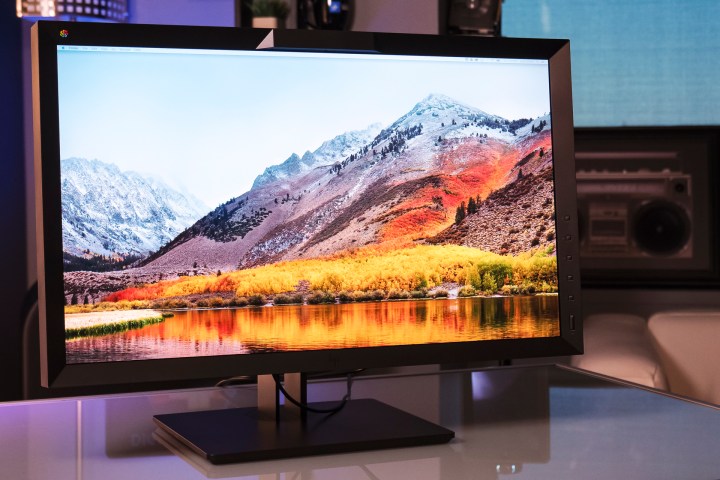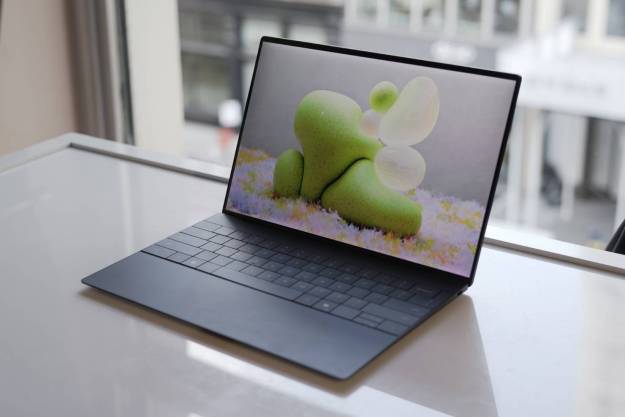
What do 80 percent of Academy Award-nominated visual effects have in common? According to HP, they use a DreamColor display. HP even won an award in 2015 from the Academy of Motion Picture Arts and Science for its professional-grade display technology.
But how good is it, really? To find out, we took HP’s new, second-generation DreamColor monitor for a spin, and let our in-house video team see what difference it made. It didn’t win us any Academy Awards, but its color precision impressed.
Don’t judge a book by its cover
The HP DreamColor Z27X G2 doesn’t look all that special. If anything, it seems a bit outdated, with thick bezels, a heavy posterior, and pronounced menu buttons. It’s not ultrawide, curved, or even 4K. But unlike most monitors that lean on those newer trends, every feature of the DreamColor Z27X is included primarily on the suggestion of the animators and videographers that make up its target audience.
That’s right — with the second-generation of the DreamColor, HP actually spoke with the people that used its product for serious work and brought a lot of those requested features into its newest version. Some of these will be more specific than the average person will know what to do with, including integrated workflow tools like a built-in KVM switcher, an adjustable refresh rate, and an assortment of markers and masks for live video broadcasting.
Even against monitors like the Samsung CF791 or the BenQ PD3200U, the DreamColor Z27X G2 Studio dominates.
One of the most useful features is the built-in calibration tool, which is packed into the bump in the top bezel of the screen. You can schedule to automate the calibration to happen whenever’s most convenient for you, and then put it on a routine maintenance schedule. That’s one less thing to distract you from your work, our video team that particularly helpful on a daily basis.
HP also threw in niceties like a single-cord Thunderbolt 3 connection and a sturdier VESA mounting bracket. These make it easier to integrate the monitor into your current setup, regardless of the other tech you use.
Color that hits the mark
None of the bells and whistles matter, of course, if the display quality doesn’t hold up.
The DreamColor Z27X G2 Studio is a 27-inch, 2,560 x 1440 matte display with a 16:9 aspect ratio. But more importantly, its display performance is great — especially in color gamut. Colors are vivid and vibrant, showing 100 percent of the sRGB color scale and 99 percent of the AdobeRGB scale. Even against monitors like the Samsung CF791 or the BenQ PD3200U, the DreamColor dominates. That is particularly important for photographers, animators, and videographers, and our video team noticed the vivid colors right off the bat.
Using a third-party calibration tool, we brought the average color error down to an impressive 0.95.
On the other hand, we felt that an average color error of 2.81 was a bit high for a monitor like this. Using a third-party calibration tool, we brought that down to an impressive 0.95, which is closer to what we expected. HP obviously assumes that people spending $2,000 on a professional-grade monitor will calibrate it, though we still would have liked to see better accuracy right out of the box.
The DreamColor isn’t all the bright, reaching a maximum of just 220 nits. That’s low, even compared to monitors a quarter the price — and it’s something our video team noticed working in our brightly lit office. Clearly, HP thinks that videographers will be using this monitor in a darkened room.
Know what you’re getting into
If it isn’t painfully clear by now, the DreamColor Z27X is not a display we’d recommend to the average buyer — or even the average professional. If you are gamer, you’ll want something with a higher refresh rate. If you want something for watching media, you’ll probably want a brighter, 4K screen. Even if you’re professional photographer, you can probably find something far cheaper that still has an accurate display.
But if you fit into the niche group of people who need a tool tailor-made for visual arts, the DreamColor is a monitor crafted for exactly what you do. Who knows? Maybe you’ll win an Academy Award.
Editors' Recommendations
- HP’s new Z studio monitors have a pop-up 4K webcam for crisp video calls
- Visually stunning HP Omen X 27 HDR TN display closes color gap with IPS monitors






